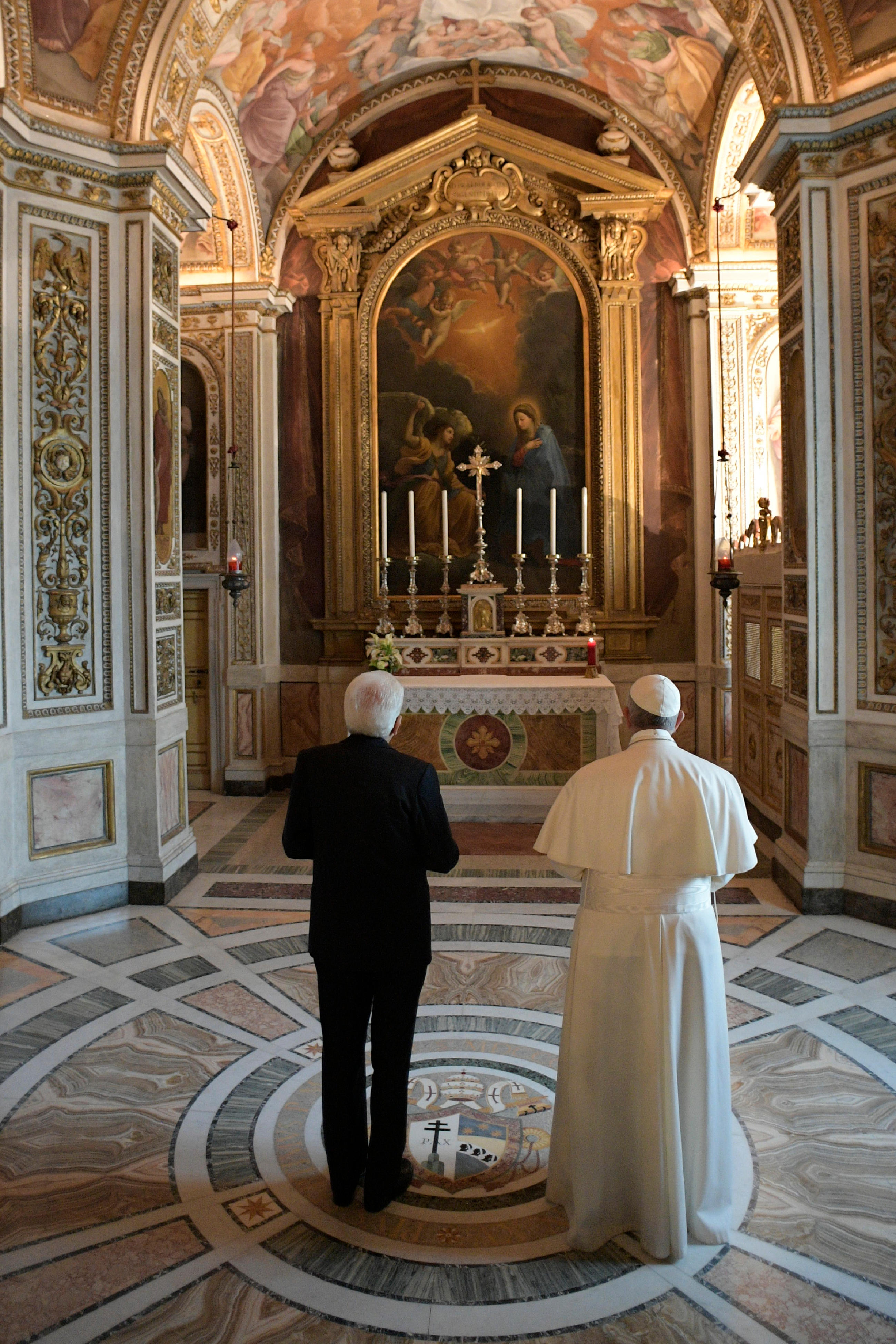RIFLECTION
A Pontiff’s visit to the Quirinal Palace is comparable to a return home. Throughout the course of its history the Palace was home to 30 Popes and four Kings. Today it hosts the twelfth president of the Italian Republic. Its heart still cherishes the Chapel of the Annunciation built by order of Paul V Borghese, frescoed by Guido Reni in the early 1600. The painting in the Chapel, within Mary’s life cycle, portrays the young Mary in the Temple, busy sewing and assisted by two angels. The act of sewing brought together State and Church leaders with a view to reaffirming their commitment to heal a society brought to its knees by the consequences of the earthquake, by unemployment, left alone by Europe to handle the migratory inflows, determined to support environmental protection whilst sharing the same concerns on terrorism.

The meeting between Pope Francis and the President of the Italian Republic last Saturday is bound to extend beyond formal statements. In a society afflicted by a crisis in leaders and fathers, they showed us that the opposite is equally true. Not with words, but with the force instilled into words that convey the credibility of their lives. The former, the Pope, is the man of the charism that actuates the Church as an institution. The latter, President Mattarella, is the man representing national institutions, guarantor of unity and independence. Together,
Two different personalities united by a common trait: moral action nourished by spirituality, the deepest dimension of life.
In some ways the Pope’s visit to the Quirinal Presidential Palace is a return home. Throughout the course of its history the Palace was home to 30 Popes and four Kings. It presently hosts the twelfth President of the Italian Republic. Its heart cherishes the Chapel of the Annunciation built by order of Paul V Borghese, frescoed by Guido Reni in the early 1600. The painting in the Chapel, within Mary’s life cycle, portrays the young Mary in the Temple, busy sewing and assisted by two angels.
The same act of sewing brought together the two State and Church leaders with a view to reaffirming their commitment to heal a society brought to its knees by the consequences of the earthquake, by unemployment, left alone by Europe to handle migratory inflows, determined to support environmental protection whilst sharing the same concerns on terrorism. Those were the themes of the two speeches.
Faced with political dynamics that drift towards the clash of civilizations, religions are part and parcel of the solution. Thus it should be no surprise that President Mattarella made the sign of the Cross with the Pope, standing side by side in silence in the chapel, place of prayer, allowing us to grasp the full meaning of the “positive laicity” recalled by Pope Francis.
For a believing politician such as President Matterella being a lay person doesn’t mean concealing his faith,
Rather, it means welcoming and supporting all religious signs present in the Country, so they may spur social cohesion and contribute to the erection of the common good.
Finally, the embrace of the children from areas hit by the earthquake signalled that rebuilding is not only a possibility but a must.